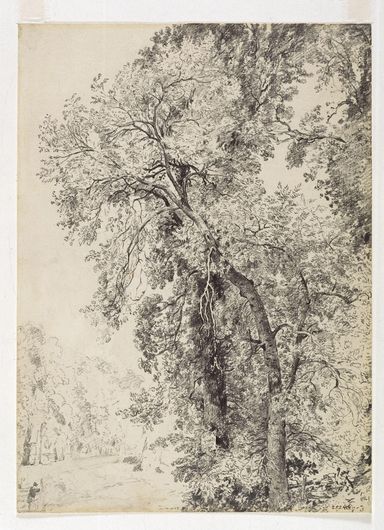What’s the value of an ash tree and why does it matter?
This is our first update on the Smarties website about what we’re working on and what we’ve achieved so far! This update focuses on the social science part of the project; the bit that’s about people and society.
Before we can begin our research into attitudes and behaviours towards ash trees and associated pests and diseases, we needed to take a deep dive into the evidence and literature about ash trees that’s already out there. As part of this we’ve looked into topics such as what social, cultural, historic and personal values are associated with ash trees.

Drawing in Pencil & Paper - V&A collection
What we’ve found is evidence from around the world of ash trees being mentioned in Norse mythology, British folklore, historic agricultural systems, place names, art, and traditional crafts in First Nation communities. For example, Wordsworth and Yeats mentioned ash trees in some of their works; there’s a painting of an ash tree by John Constable in the Victoria and Albert Museum in London; Neolithic trackways in Somerset were constructed using ash; and ash wood has historically been used to make hockey sticks, shinty sticks and hurling sticks. Not only that but there are 955 other species of fauna and flora associated with ash trees.
So why does this matter? It matters because it helps us understand why we don’t want to lose ash trees to pests and diseases. If we lose ash trees we potentially lose all of these other things that connect us to our past, and to places and activities that we value.
Crucially, understanding why things are important to us, in what ways, helps us to understand what we might be prepared to do (or not do) to protect them. With ash trees in some parts of Great Britain already being massively impacted by ash dieback, and with growing concerns about when, not if, Emerald Ash Borer might be found in this country, the need for surveillance and management of ash trees has never been greater. This requires anyone with any responsibility for ash trees to be aware of the challenges, aware of the options for management and treatment, and willing and able to act when required. Our actions are motivated by a myriad of influences and influencers but most deep seated of all those influences are our underlying values. By shining a light on those (and much else) in this project we hope to find the best ways to keep protecting ash trees as they potentially face the twin threats of ash dieback and Emerald Ash Borer.
